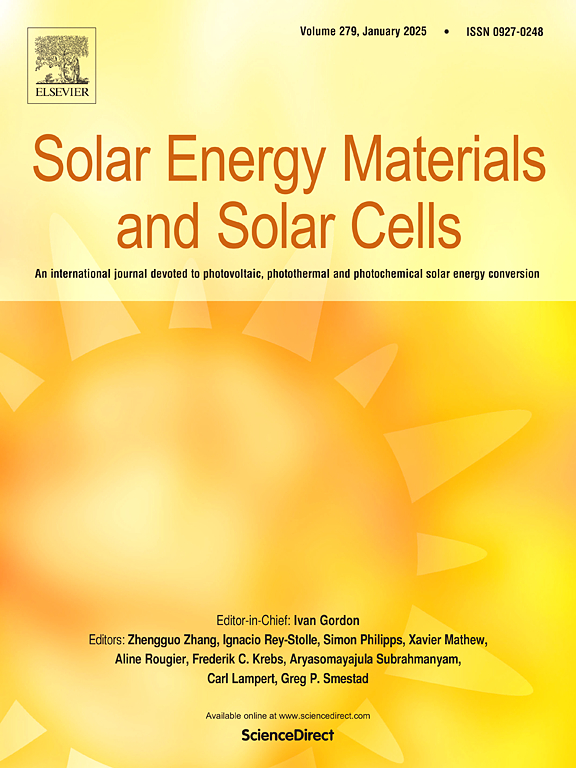Facile surface modification process of Sn-doped In2O3 electron transport layer for enhanced perovskite solar cell performance
IF 6.3
2区 材料科学
Q2 ENERGY & FUELS
引用次数: 0
Abstract
Perovskite solar cell (PSC) devices have achieved a tremendous amount of attention because of their facile fabrication process, high efficiency, and cost-effectiveness. This research mainly focuses on providing a solvent-based surface modification process of Tin-doped Indium Oxide (Sn-doped In2O3; Sn-In2O3) based electron transport layer (ETL) for PSC's fabrication. The ETL layer should exhibit good optical transparency and electrical conductivity in planner-structured PSC devices for better performance. Pristine and surface-modified Sn-In2O3 thin films-based ETLs were prepared by facile spray pyrolysis technique. A solvent-based surface modification process has been carried out to control the grain boundary effect on the charge transfer process of Sn-In2O3 film. The surface modification process's impact on the structural, surface morphology, surface charge state, optical, and electrical properties of Sn-In2O3 thin films was used to investigate the power conversion efficiency (PCE) of the developed PSCs. The glancing angle X-ray diffraction (GAXRD), X-ray photoelectron spectroscopy (XPS), Field Emission Scanning Electron Microscopy (FE-SEM), AFM, Ultra-Violet visible and Near Infra-Red (UV–Vis–NIR and Hall measurements confirm the significant variation of Sn-In2O3 films based on the surface modification process. A surface-modified Sn-In2O3 thin film-based ETL-used PSC device demonstrated a maximum efficiency of 14.3 %, whereas a pristine-based Sn-In2O3 thin film showed a maximum efficiency of 7.2 %. The results obtained indicate that surface-modified spray-deposited Sn-In2O3 thin film can be a suitable candidate to serve as an ETL for PSC device fabrication.

求助全文
约1分钟内获得全文
求助全文
来源期刊

Solar Energy Materials and Solar Cells
工程技术-材料科学:综合
CiteScore
12.60
自引率
11.60%
发文量
513
审稿时长
47 days
期刊介绍:
Solar Energy Materials & Solar Cells is intended as a vehicle for the dissemination of research results on materials science and technology related to photovoltaic, photothermal and photoelectrochemical solar energy conversion. Materials science is taken in the broadest possible sense and encompasses physics, chemistry, optics, materials fabrication and analysis for all types of materials.
 求助内容:
求助内容: 应助结果提醒方式:
应助结果提醒方式:


